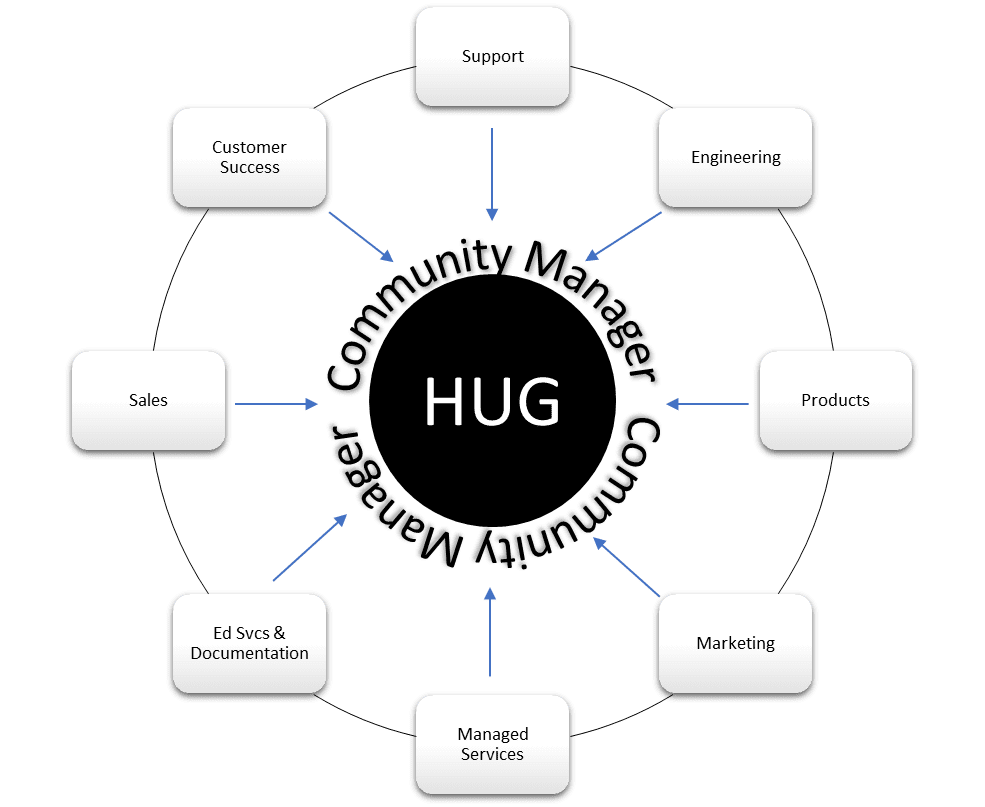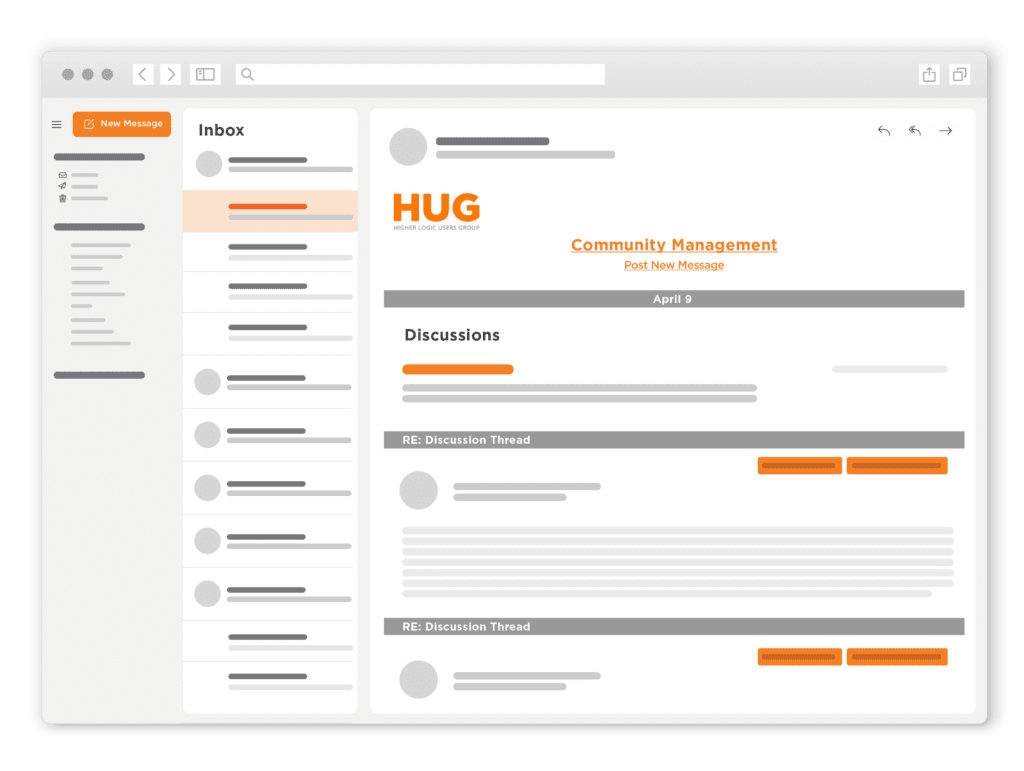
Why & How Every Single One of Your Employees Should be Talking to Customers
To become more customer-centric, build an online customer community & get all departments involved. This enables every employee to be customer-facing and improve the customer experience.
Did you know that every single new hire at Automattic (the holding company of WordPress) spends their first two weeks in customer support? After that, every employee spends one week in support annually, regardless of their position. The company does this because it believes that an early and ongoing connection with the people who use its products is irreplaceable.
We couldn’t agree more.
Businesses that put the customer experience front and center are more profitable and retain more customers than those that don’t. Consider these statistics from Forbes:
- Customer-centric companies are 60% more profitable than companies that don’t focus on customers.
- Brands with superior customer experience bring in 7 times more revenue than competitors that lag in customer experience.
- 84% of companies that work to improve their customer experience report an increase in their revenue.
Being customer-centric goes far beyond offering a solid product or having a service center where customers can voice complaints. It’s woven into a business’s culture and way of life.
Customer-centric companies are laser-focused on providing their customers with amazing experiences.
They engage, empathize, understand, and listen. A customer-centric company then makes decisions based on what they have learned.
Put Your Customers Front and Center
How can your business become more customer-focused?
It isn’t just about tying customer experience into new employee onboarding. Nor is it about spending a week each year working in support (although both things certainly help). It’s not just one tactic – tying customer experience to new employee onboarding or spending time working in support (although it doesn’t hurt).
It requires a shift in culture and mindset.
It requires all departments to come together as one unified team that caters to customers with a clear vision and consistent voice.
It requires people across all departments in your organization to regularly engage with customers.
How can your organization transform into one that is customer-centric? You need a simple way for your employees to access a large base of customers on a regular, ongoing basis.
Enter the online community.
Building an online customer community is the perfect way to get your entire company involved and engaged with customers. Your employees get the customer insights they need to build better products and services, which leads to a better customer experience, and happier people on both sides – customers & employees.
Your customers also win with community.
While getting access to a rich, searchable platform of resources, they can also easily engage with your organization and even more importantly, with one another.
How to Introduce an Online Community in Your Organization
Ultimately, engagement within your online community should be part of a wider customer-centric company strategy. It might even require a bit of realignment in your organizational structure.
For it to work best, you might want to consider a community hub and spoke model for your organization, with your customer (and online community) at the center, and all departments sitting at the end of each spoke.

For example, our customer community, the Higher Logic Users Group (HUG) operates this way. Each department has access to the community and is welcome to share expertise and discuss with customers.
Your community KPIs should include metrics around customers and customer engagement, and each department would find ways to feed into those goals. Your organization should consider allowing each employee an allotted time each week to spend as time with the customers. This way, employees can engage without adding to their current workload.
Regardless of your setup, getting employees onboarded into and engaged with your community might still feel daunting. It doesn’t have to be. To make the transition smooth, your CX team can pave the way for employees to get involved by providing guidance, training, and general support. As you make the transition, you need to prepare employees for talking to customers.
Try these tips:
- New employees should create a community profile and get properly set up and trained as a part of their new hire onboarding.
- To get current employees involved, select community champions across departments who can get their teams excited and engaged, and provide them with a playbook of suggested actions to take to ease into the community.
- Create guidelines for involvement.

Why Talking to Customers is Great for Employees (and for Your Business!)
While some employees might feel a little reluctant to get involved, once they do, they will discover that engaging with customers is easy (even fun!) and that they can use the online community to make their day-to-day work easier.
CX teams (or the department owning your online community) should ensure that all employees have an entry point to get involved. Employees that are already vocal within your organization are likely to be vocal in your online community. Those that aren’t outgoing might need an extra nudge.
CX can help by showing all the different ways to get involved. Not every employee needs to write blog posts or answer questions. Different people can engage in different ways. The initial entry point for someone reluctant to engage might start with a simple “Like” or a “ ” response for a particularly awesome post.
1. Ensure efficient product & experience improvements
Within the community, teams can gather feedback to improve product development, test new ideas to inform future communication strategies or content planning, understand how customers really use products, identify loyal customers for referral/advocacy programs, and more.
Giving every employee access to this invaluable community data will make planning more efficient and will ensure that your employees don’t spend unnecessary time working on something that isn’t of interest to the end-user. This frees up time for your teams to focus on the things that matter and to come up with innovative new ideas that will wow your customers.
2. Gain invaluable customer insights
Your online community also gives employees who work in traditionally non-customer-facing roles to get a new perspective on the end-user (how they talk, how they use the product day to day, what concerns them). For employees in technical roles, they may not get dedicated time to interact with their customers. However, a community can help add the voice of the customer to the product development process.
Some SaaS companies come to the realization that their customers aren’t as tech-savvy as they once thought. Or that they speak a completely different language than is used in the product. Or even that certain icons and buttons aren’t obvious enough, even though these features felt obvious when the product was being developed. These are immensely valuable learnings that will enhance the customer experience.
3. Increase employee engagement
Encouraging your employees to get involved in your online community will increase employee engagement and allow your team to feel like they have a real voice at the company. This improves overall performance.
The University of Warwick found that your happiest, most engaged employees are 12% more productive. Or, if you want to translate employee engagement into financial impact, you should know that disengaged employees cost organizations around $450-550 billion each year – that’s a lot of cash!
Furthermore, engaging employees impacts customer loyalty. Aberdeen Group found that companies who work to actively engage employees have customer loyalty rates 233% higher than those who don’t. If you want to decrease churn, get your employees talking with your customers and implementing value-driven solutions.
Why Your Customers Will Love an Online Community Where Employees Engage
By building an online community, you create a hub where customers can connect with like-minded people (from both employees and customers). Facilitating interaction within the community empowers members to engage in discussions and to interact with each other by posting questions, discussing shared experiences, and getting responses from other people in the community.
This builds a stronger tie to your company, as it helps customers feel connected to something bigger than themselves. Added bonus, when your customers get answers from experts at your company, they get to put real names and faces to the titles and departments at your organization.
That’s why thriving communities help you humanize your business. You’re connecting your customers with real people in your organization. It provides your customers with a unique look inside your business and its people, which builds trust and shows them that they really matter. This changes the entire dynamic of how they relate to your organization. It creates an authentic customer experience and a stronger connection to your company.
How To Ensure Your Online Community Remains Valuable For Your Customers
If you’re familiar with online community engagement strategy, you might be wondering how to balance the influx of employee content with customer content. After all, you don’t want to create a space that’s not customer-centric.
The answer is great internal community management. Once engagement picks up within your online community, you need to manage it to ensure that both customers and employees stick to the guidelines. Ownership of your community should be centralized and sit in the department where it makes the most sense. At Higher Logic, ownership lives with the CX team, but we involve all other departments to ensure customers have a great experience.
Community management is key to ensure that you don’t inadvertently have your own employees bombarding customers and overwhelming the community. Your customers should generate most of the content and should still have the opportunity to easily interact with other community members. Your community manager(s) should ensure that there is a good balance of content and that employees pull back when needed.
Additionally, once teams realize the treasure trove of insights that they can glean from your online community, they might be swayed to over-engage with questions for customers, feedback loops, and testing. Your community managers should ensure that employee engagement always remains with the customer experience at the core and that employee engagement doesn’t become self-serving. A question I like to ask is this: “Is this better for them or for us?” If it’s us, take a step back and realign your asks to that customer-centric experience.
Online Communities Enable Every Employee to be More Customer-Centric
As you transform your business into one that puts customers at the center, ensure that everyone within your company acts with the customer’s best interests at the heart of it all. To do this, you and your employees must first listen, empathize, understand, and then act with your customer in mind.
Having employees work on support tickets or spend time within the CX team is one way to go about this, but for a continuous, sustained customer-centric mindset, every single employee should regularly engage with customers. There is no better way to do this than to get your employees active within your customer-facing online community.
What a better thing to say at a company than, “See you around the community!” to let your customers know they are heard, understood, and that they truly sit at the center of your experience.


